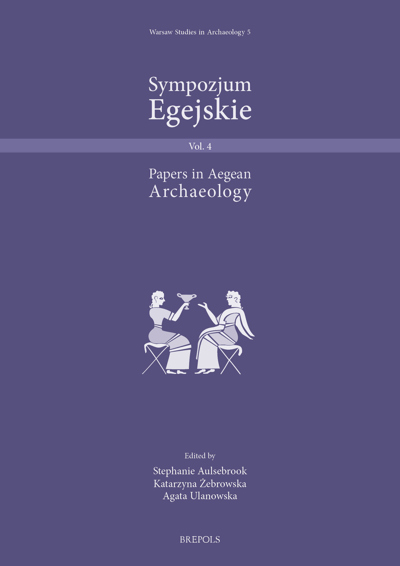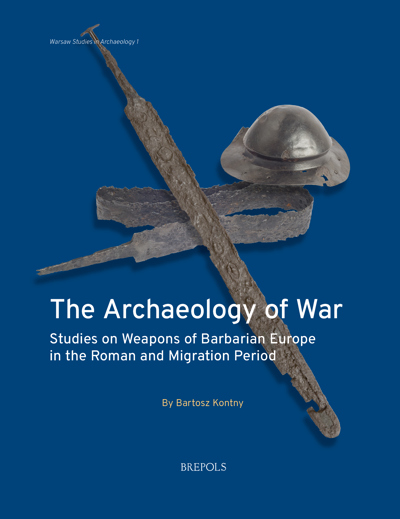
Funeral Rites of the Yotvingians
Excavations from a Cemetery in North-eastern Poland
Ludwika Jończyk
- Pages: 353 p.
- Size:216 x 280 mm
- Illustrations:57 b/w, 227 col., 27 tables b/w.
- Language(s):English, Polish
- Publication Year:2026
- € 115,00 EXCL. VAT RETAIL PRICE
- ISBN: 978-2-503-61859-3
- Hardback
- Forthcoming (Jan/26)
- € 115,00 EXCL. VAT RETAIL PRICE
- ISBN: 978-2-503-61860-9
- E-book
- Forthcoming
*How to pre-order?
Presenting state-of-the-art archaeological research at the Mosiężysko burial ground, the book sheds new light on the burial rites of the Yotvingian tribe inhabiting the Suwałki region in northeastern Poland in the 12th–13th centuries CE.
Ludwika Jończyk works at the Faculty of Archaeology at the University of Warsaw. Her interests focus on the archaeology of the Pruthenians in the early Middle Ages. In recent years, she has devoted herself primarily to the study of Suwałki region in the NE Poland and the history of the Yotvingian tribe living there. She focuses on the study of burial rites and trade links.
The burial rites of the Yotvingians, a people who inhabited the Suwałki region of north-eastern Poland, were until recently almost completely unknown to archaeologists. For a long time, it was considered that the funeral rites of this people could not be identified archaeologically, and while finds such as settlement complexes have been excavated, related necropolises were not found. This changed with the identification of the Mosiężysko burial ground in the Szurpiły settlement complex, dated to the twelfth and thirteenth centuries AD, which is the first sepulchral site of the early medieval Yotvingians to have been discovered and surveyed using state-of-the-art archaeological methods. The results from these excavations are presented for the first time in this monograph.
The excavations at the site yielded traces of collective cremation burials discovered scattered on the surface of the site, accompanied by stone structures. The equipment of the deceased, intentionally destroyed and burnt, included numerous fragments of ornaments, parts of costume and tools, as well as sporadically occurring weapons and horse riding gear. In addition to finds of artefacts characteristic of the early medieval Suwałki region, it was also possible to distinguish interregional varieties akin to finds from Sambia, Curonia, and other lands inhabited by the Balts. The results of this ground-breaking find, documented here, have now made it possible to expand research into the Yotvingians, and to identify similar sites.
List of Illustrations
Acknowledgements
Translator’s note
Chapter 1. Introduction
Chapter 2. Settlement Complex in Szurpiły
Chapter 3. State of Research on the Funeral Rite
Chapter 4. Natural Environment of the Szurpiły Area
Chapter 5. Archaeological Investigation at Mosiężysko
Chapter 6. Analysis
Chapter 7. Mosiężysko Cemetery in the Light of the Funeral Rites in the Settlement Micro-region of Szurpiły and the Czarna Hańcza Group
Chapter 8. Funeral Rite of the Old Prussians in the Light of Historical and Ethnographic Sources
Chapter 9. Conclusions and Desiderata
Works Cited
Plates
Appendix A
Analysis of Cremated Human Remains
Dr Elżbieta Jaskulska
Appendix B
Metalographical Analysis
Grzegorz Żabiński, Tomasz Goryczka, Krzysztof Aniołek
Appendix C
Microscopic Analysis of Non-ferrous Metal Artefacts
Karol Żołędziowski
Appendix D
Results of Metallographic Analysis of Non-ferrous Alloys
Ewelina Miśta-Jakubowska
Appendix E
Archaeometric Analyses of Ceramic Vessel Samples from the Cemetery in Szurpiły and Local Clay Samples
Małgorzata Daszkiewicz




